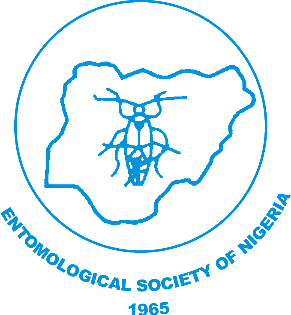Species Composition and Relative Abundance of Insects of Veterinary Importance at Abuja, Nigeria
DOI:36108/NJE/5102/13.0122
JEGEDE, O.C., MBUKO, G., OBETA, S.S., AGBEDE, R.I.S., EJIOFOR, C. E. AND DANIELS, T.
Nig. J. Ent. 31: 129-135 (2015)
ABSTRACT. The insect fauna of University of Abuja was sampled with unbaited Bioconica and Nitsetrap from Oct. 19 to Nov. 30, 2012 (early dry season) and from Feb. x to Mar. y, 2013 (late dry season) to determine the occurrence and prevalence of insect species of veterinary importance. Efficiencies of the two traps were compared using the Student’s t statistic at tn = 0.05. Thirteen insect species in eight Families and five Orders were caught in the early dry season compared with seven species in five Families and two Orders in the late dry season. The Order Diptera had the highest representation (six Families) and the most abundant species was Stomoxys calcitrans (57.6 and 57.2 % of the total collections in early and late dry season, respectively); other dipterous species collected were Tabanus, Stomoxys, Chrysops Culicoides. Overall, Bioconical trap was more efficient than Nitse trap (x vs. y trapped insects, to.< 0.05). The roles of the dipterous insects in disease transmission and the repercussions to both man and livestock were discussed. The use of traps as a method of controlling insect population( s) and proper methods of waste disposal were recommended to evade health hazards linked to these insects.
Keywords: Biconical, Nitse, traps, insects, veterinary importance.
